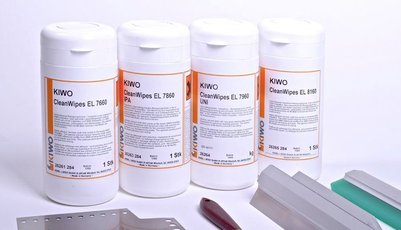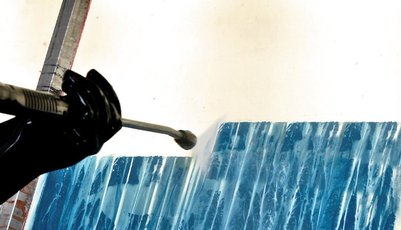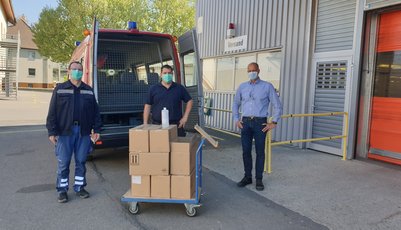Product news
AZOCOL Z 170 FL
AZOCOL Z 170 FL
A dual-cure diazo high-end photoemulsion for printing line widths under 30 microns specifically for use in the solar industry and for printed electronics
Within the field of printed electronics, there are numerous applications in which the screenprinting process is used. These include, for example, OLEDs, touch panels and displays; in this context, we can also include LTCC (Low Temperature Co-fired Ceramics), MLCC (Multi-Layer Ceramic Capacitors) as well as fuel cells. At the present time, 20 microns and less can already be screenprinted effectively.
The production of solar cells (both mono and multi-crystalline cells) highlights another field, in which ever thinner, but at the same time, higher fingers of conductive silver are required. In this way, high performance cross-sections and very low light-blocking can be achieved on the silicon wafers. Screenprinting has already proved that 30 µm fine lines can be laid down as standard.
To achieve such high degrees of resolution, the combination of a number of parameters is a prerequisite. One of these is a suitable photoemulsion. In developing AZOCOL Z 170 FL, a high-end photoemulsion, KIWO – Kissel + Wolf GmbH has launched a product ideal for applications, when both highest resolution and edge definition are required, even at higher EOM build-ups.
FL stands for FineLine, which indicates line widths of 30 µm and less. In this range of micro-sizes, it is possible to achieve this kind of fineness with AZOCOL Z 170 FL without any problems. This is attained on the one hand through the finest particle dispersion of the emulsion and on the other, the ability of the photoemulsion to absorb ultraviolet light reflection so well during exposure, that light-scatter effects are largely avoided.
Furthermore, the screen-printing emulsion has excellent paste release, obviating any "bleeding effect" in the printed image and additionally, the solar paste is almost entirely released during printing. In the production of solar cells, this in turn leads to printed lines having a higher aspect ratio and saving both silver paste and thus reducing costs.
In addition to the demand for excellent resolution, the reproducibility of the printed image is of vital importance. All previous print characteristics can be precisely reenacted with AZOCOL® Z 170 FL. This has a high relevance for example, when double-printing on silicon wafers.
Every stencil has to undergo cleaning, not only when the print cycle is finished, but also at times during the printing process itself. As AZOCOL® Z 170 FL is both water and solvent-resistant, all conventional cleaning agents and specialty solvents such as NMP, NEP etc can also be used.
Depending on the application and in order to obtain the best possible performance of the photoemulsion, it is imperative to use high-quality stainless steel mesh and exposing films or chromium masks. In these combinations, excellent results can also be achieved at relatively high EOM build-ups of 10-15 µm.



















![[Translate to English:] [Translate to English:]](/fileadmin/_processed_/6/2/csm_Mobil_Bild_07f3104336.jpg)


![[Translate to English:] [Translate to English:]](/fileadmin/_processed_/7/8/csm_Kissel_und_Wolf_Spendenaktion_2019_bbbc67feb4.jpg)


